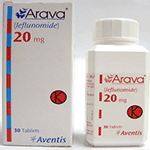Noroxin - Comprehensive Usage Guide: instructions, indications, composition, side effects
Composition
- Active Ingredient: Norfloxacin
- Excipients: May include colloidal silicon dioxide, crospovidone, hypromellose, magnesium stearate, microcrystalline cellulose, polyethylene glycol, talc, titanium dioxide, and other inactive ingredients depending on the formulation.
Official Forms
- Tablets: Available in various strengths, including 400 mg tablets.
Pharmacological Group
Noroxin belongs to the pharmacological group of fluoroquinolone antibacterial agents (ATC code: J01MA06).
Pharmacological Properties
- Pharmacodynamics: Norfloxacin exerts its bactericidal effect by inhibiting bacterial DNA gyrase and topoisomerase IV, enzymes essential for DNA replication and transcription. It is active against a broad spectrum of Gram-positive and Gram-negative bacteria, including Escherichia coli, Staphylococcus aureus, and Pseudomonas aeruginosa.
- Pharmacokinetics: Following oral administration, norfloxacin is rapidly and well-absorbed from the gastrointestinal tract. It achieves therapeutic concentrations in various tissues and body fluids, including urine, prostate, and genital tract secretions. Norfloxacin is primarily excreted unchanged in the urine via renal filtration and tubular secretion.
Indications
Noroxin is indicated for the treatment of various bacterial infections caused by susceptible pathogens, including:
- Urinary tract infections (e.g., cystitis, pyelonephritis)
- Prostatitis
- Gonorrhea
- Lower respiratory tract infections (e.g., bronchitis)
- Gastrointestinal infections (e.g., traveler’s diarrhea)
- Skin and soft tissue infections
Contraindications
Noroxin is contraindicated in individuals with a history of hypersensitivity to norfloxacin or any component of the formulation, as well as those with a history of severe allergic reactions (e.g., anaphylaxis) to fluoroquinolone antibiotics.
Specifics of Use
- Noroxin tablets should be taken orally with a full glass of water, preferably at evenly spaced intervals throughout the day, and swallowed whole without crushing or chewing.
- Noroxin may be taken with or without food, but should not be taken with dairy products or calcium-fortified juices due to potential interactions.
Dosage and Administration
- The recommended dosage of Noroxin varies depending on the type and severity of the infection, as well as patient factors such as renal function.
- The usual adult dosage for uncomplicated urinary tract infections is 400 mg once daily for 3 to 7 days. For other infections, the dosage may range from 400 mg to 800 mg daily, divided into two doses.
Side Effects
Common side effects of Noroxin may include gastrointestinal disturbances (e.g., nausea, diarrhea, abdominal pain), headache, dizziness, and skin rash. Serious adverse effects such as tendonitis and tendon rupture, peripheral neuropathy, and photosensitivity reactions are rare but require medical attention if they occur.
Storage and Shelf Life
Noroxin tablets should be stored at room temperature (15-30°C) in a dry place, protected from light and moisture. The bottle should be tightly closed when not in use.
Pregnancy and Breastfeeding
Noroxin is generally not recommended during pregnancy or breastfeeding due to potential risks to the fetus or infant. Consultation with a healthcare provider is recommended in these situations.
Impact on Motor Functions
Noroxin may cause dizziness or lightheadedness, especially during the first few doses or when rising from a sitting or lying position. Patients should exercise caution when driving or operating machinery until they know how Noroxin affects them.
Conclusion
Noroxin is an effective antibacterial medication for the treatment of various bacterial infections, offering broad-spectrum coverage and convenient dosing. By understanding its pharmacological properties, indications, dosage, and precautions, patients and healthcare providers can work together to achieve optimal treatment outcomes. Always consult a healthcare provider for personalized medical advice.


